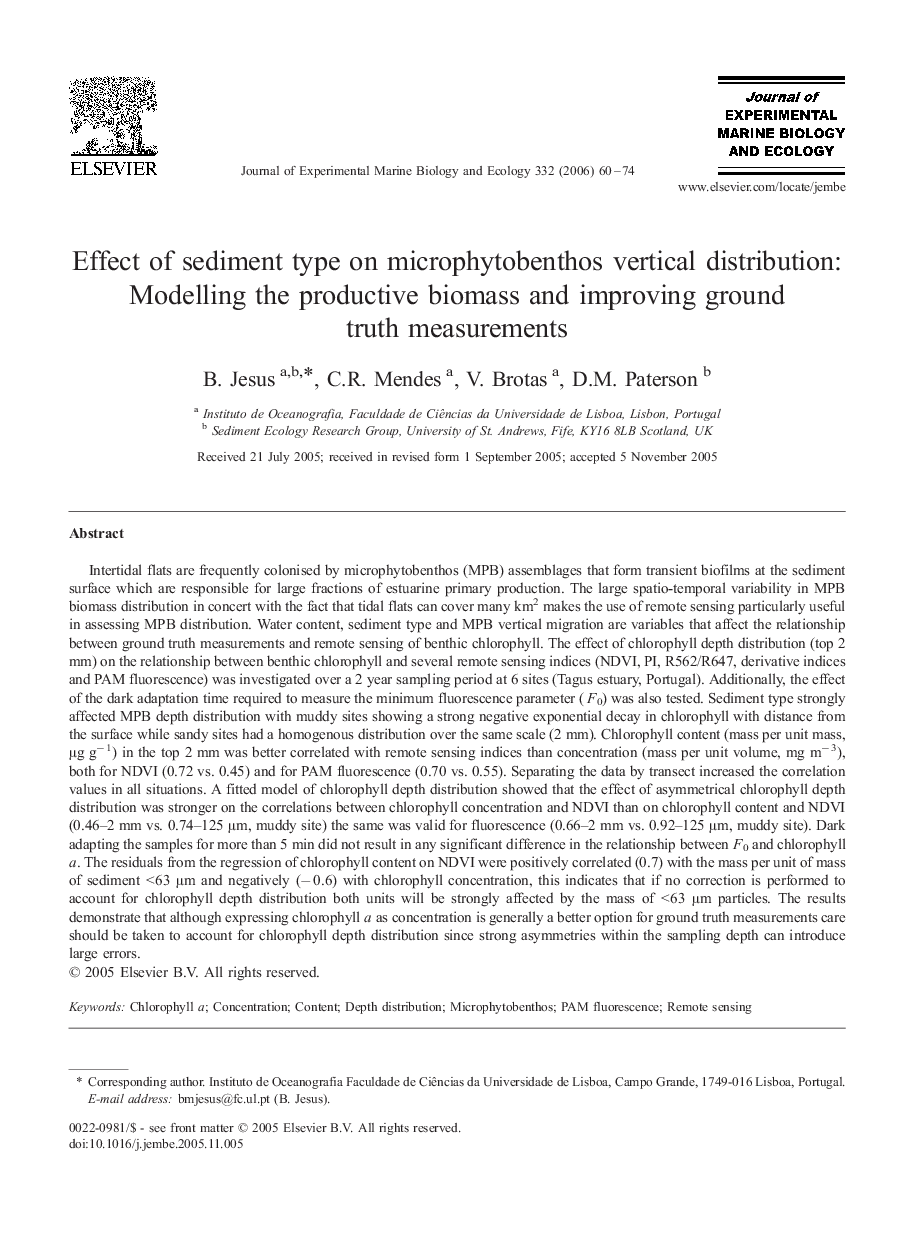| کد مقاله | کد نشریه | سال انتشار | مقاله انگلیسی | نسخه تمام متن |
|---|---|---|---|---|
| 4398082 | 1305924 | 2006 | 15 صفحه PDF | دانلود رایگان |

Intertidal flats are frequently colonised by microphytobenthos (MPB) assemblages that form transient biofilms at the sediment surface which are responsible for large fractions of estuarine primary production. The large spatio-temporal variability in MPB biomass distribution in concert with the fact that tidal flats can cover many km2 makes the use of remote sensing particularly useful in assessing MPB distribution. Water content, sediment type and MPB vertical migration are variables that affect the relationship between ground truth measurements and remote sensing of benthic chlorophyll. The effect of chlorophyll depth distribution (top 2 mm) on the relationship between benthic chlorophyll and several remote sensing indices (NDVI, PI, R562/R647, derivative indices and PAM fluorescence) was investigated over a 2 year sampling period at 6 sites (Tagus estuary, Portugal). Additionally, the effect of the dark adaptation time required to measure the minimum fluorescence parameter (F0) was also tested. Sediment type strongly affected MPB depth distribution with muddy sites showing a strong negative exponential decay in chlorophyll with distance from the surface while sandy sites had a homogenous distribution over the same scale (2 mm). Chlorophyll content (mass per unit mass, μg g− 1) in the top 2 mm was better correlated with remote sensing indices than concentration (mass per unit volume, mg m− 3), both for NDVI (0.72 vs. 0.45) and for PAM fluorescence (0.70 vs. 0.55). Separating the data by transect increased the correlation values in all situations. A fitted model of chlorophyll depth distribution showed that the effect of asymmetrical chlorophyll depth distribution was stronger on the correlations between chlorophyll concentration and NDVI than on chlorophyll content and NDVI (0.46–2 mm vs. 0.74–125 μm, muddy site) the same was valid for fluorescence (0.66–2 mm vs. 0.92–125 μm, muddy site). Dark adapting the samples for more than 5 min did not result in any significant difference in the relationship between F0 and chlorophyll a. The residuals from the regression of chlorophyll content on NDVI were positively correlated (0.7) with the mass per unit of mass of sediment < 63 μm and negatively (− 0.6) with chlorophyll concentration, this indicates that if no correction is performed to account for chlorophyll depth distribution both units will be strongly affected by the mass of < 63 μm particles. The results demonstrate that although expressing chlorophyll a as concentration is generally a better option for ground truth measurements care should be taken to account for chlorophyll depth distribution since strong asymmetries within the sampling depth can introduce large errors.
Journal: Journal of Experimental Marine Biology and Ecology - Volume 332, Issue 1, 2 May 2006, Pages 60–74